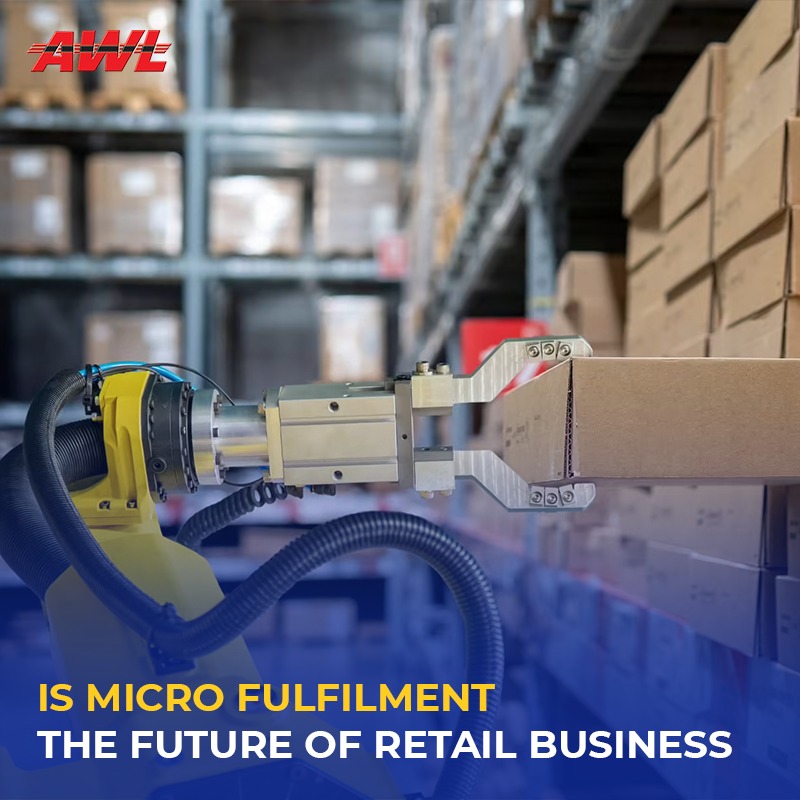

Choosing between a 3PL and a 4PL logistics supplier to optimize your supply chain might be difficult. Making the wrong option might cost you millions of dollars and have a detrimental effect on your customer service levels — so you'll want to get it right the first time.
3PL and 4PL solutions will be compared in this post and how they might help your unique supply chain strategy will be discussed.
1PL, 2PL, 3PL, 4PL, 5PL Definitions
1PL–It is a firm that moves goods or services from one location to another. To put it another way, a small farm that sells its eggs at the local grocery shop is known as 1PL.
2PL - A two-tier logistics provider is an organization that owns assets such as trucks or planes for the purpose of transporting things between locations. That same local farm may engage a second-party logistics provider to get their eggs from the farm to the grocery shop.
3PL–Third-party logistics providers (or 3PLs) may subcontract out parts or all of a company's transportation and logistics activities to a third-party service provider. The supply chain can benefit from additional services such as crating, boxing, and packaging. As part of the 3PL's role in our farm-to-grocery-store scenario, they may also be responsible for putting the eggs in cartons.
4PL - In a 4PL model, an organization outsources logistics management as well as supply chain execution. Typically, the 4PL provider provides the organization with greater strategic insight and management of its supply chain. You may basically outsource your whole logistical operations to 4PLs (four-party logistics providers). When a grocery store's supply of eggs begins to run low, the 4PL may work with the farmer to enhance egg production.
5PL - In a 5PL system, an organization (client) outsources all of its supply chains to a logistics service provider (also called a logistics service provider). For the client, the 5PL company acts as a planner, organizer, and implementer. As we progress through the logistics model spectrum, from 1PL to 5PL, this becomes clear that the logistics function is increasingly being handled by the provider rather than the organization. The two most common models today are 3PL and 4PL, and we'll look at how each can help with supply chain issues.
"Third-party logistics provider," or 3PL, has been around since the 1970s. It simply means that a third party, in addition to the shipper/receiver and the carrier, is involved in a company's logistics operations.
The company does not own or control the products that are shipped through a third-party logistics service. This third party acts as a liaison or manager between the other two parties.
CSCMP defines the earliest 3PLs as intermodal marketing firms that accepted loads from shippers and then offered them to railroads, and as a result, it acts as a third party in the contract between shippers and carriers.Any company that provides third-party logistics services (or "3PL") is known as such nowadays. Parts and materials must be able to move between suppliers and manufacturers, while finished goods must be able to move from producers to distribution centers and retail outlets.
It is possible for a third-party logistics service to have its own trucks and warehouses. 3PLs and brokers have complementary functions; however it is common for a broker to acquire trucking capacity for a given consignment. There are many ways in which a third-party logistics service can help clients transport their goods.
Majority of 3PLs offer a combination of integrated supply chain services, including:
• Transportation
• Warehousing
• Cross-docking
• Inventory management
• Packaging
• Freight forwarding
In order to suit the strategic requirements of clients for moving, storing, and fulfilling goods and commodities, a third-party logistics provider can grow and change services. 3PLs step in when an organization's supply chain becomes too complicated to handle on its own. Mergers and acquisitions, for example, might lead to an out-of-control supply chain that no longer falls within the company's capabilities.
The 3PL brings experience from working with a diverse client base in a diverse range of industries. In times of capacity restriction, long-term ties with carriers may result in more favorable price and service. Cost savings on everything from packing tape to ocean freight can be realized through scale economies.
Advantages of 3PL
A third-party logistics provider (third-party logistics provider) will provide novel ways for transforming your supply chain into a more cost-effective and responsive model. Consider the work that we are doing at AWL India as an illustration of this. Forward-deployed inventory management, in contrast to the usual single-DC model, is something we designed and developed ourselves. With vast stockpiles and occasional truck service, the conventional hub-and-spoke DC model cannot keep up with the speed of commerce. We pioneered the forward-deployed model of warehousing and distribution, which makes use of a greater series of smaller facilities to get commodities closer to the consumer. This decentralized, hyper connected paradigm offers the necessary reactivity to meet consumers' on-time fulfillment expectations.
Customers want overnight delivery, or as close to it as feasible, regardless of whether they are direct-to-consumer or under a service-level agreement. The WMS at AWL India can optimize your inventory by location, ensuring that product is always available in high-demand locations. While doing so you are ensuring to save money on transportation and logistics whilst enhancing customer experience.
Disadvantages of 3PL
There are several factors to keep in mind when using the 3PL paradigm, which has been around for decades. As a caution, the lack of direct management and oversight may be the most critical. An outsourced service provider, in other words, is what a 3PL is all about. Because of this, some of the activities will be out of your control. An additional level of care is required to ensure quality control and client service. The consumer will blame your firm, not the 3PL, if a 3PL fails to meet their expectations.
Additionally, the level of dependency a 3PL might cause is a major concern of mine. You may have a difficult time switching providers or bringing operations back in-house if you outsource a large portion of your organization.
What is a Fourth-Party Logistics Provider?
An additional level of supply chain management is provided by a 4PL, or fourth-party logistics organization, for the benefit of the customer. 4PLs provide their clients with a "control tower" view of their supply chains, allowing them to manage a multitude of warehouses and shipping enterprises, as well as freight forwarders and agencies, all from a single location.
The ultimate goal is for the 4PL to be the only point of contact between the supply chain and the client organization, according to the company. Accenture was the first company to trademark the phrase in the mid-1990s, however it has since become common parlance.
In most cases, a 4PL is formed as a joint venture or as a long-term contract with a large number of partners, with the goal of managing logistics for specific regions or business lines. A 4PL component, for example, could exist within the context of a larger 3PL system. You've probably worked with a fourth-party logistics provider if you've ever outsourced your human resources or financial functions.
What's the Difference Between 3PL and 4PL Logistics?
In most cases, the 4PL does not own the transportation or storage assets used in the process. Vendors, rather, manage the supply chain. Depending on the scope of the supply chain, the 4PL may be responsible for coordinating the actions of other 3PLs. While a 3PL may focus more on day-to-day operations, a 4PL focuses on the integration and optimization of the supply chain. Additionally, a Lead Logistics Partner (LLP) may be referred to as a 4PL, as stated by the CSCMP.
For the most part, the primary advantage of working with a 4PL is that it's more strategic than a 3PL, which may be more transactional in its approach. The key benefit of utilizing a 4PL is that you will have a single point of contact for all aspects of your supply chain. Even with a 3PL, it is probable that you will have to perform some tasks alone. The 4PL should manage those processes on your behalf, working as a liaison between third-party logistics providers (3PLs), carriers, warehousing vendors, and other supply chain partners.As part of the 4PL arrangement, technology is used to provide increased visibility and impose operational discipline on many partners. Focusing on core capabilities and entrusting the supply chain function to a 4PL partner ensures maximum value. In essence, the 4PL performs the duties of the supply chain as if they were managed by the company itself.
Businesses that are making the switch to a forward deployment or decentralized distribution model may benefit from a 4PL partner who can assist them in managing the increased complexity of the supply chain. A more agile paradigm for e-commerce and Omni channel services is being adopted by retailers in particular. A 4PL is capable of handling the ever-increasing resources required to compete at that level. Because of the need for quicker response times, organizations are moving away from the mega regional DC of the million square feet or more. For e-commerce, parcel carriers and couriers are a better option than LTL or truckload services because the 4PL can manage these partnerships and optimize the network for them.
Concluding Lines- 3PL vs. 4PL What's Best for Your Company?
If your business is dealing with an increasingly complex supply chain and is trying to fulfill consumer expectations for faster response times, an innovative third-party logistics (3PL) or fourth-party logistics (4PL) provider may be the appropriate solution.
You may maximize consumer value and gain a competitive advantage by working with a creative leader. In order to achieve supply chain excellence, successful logistics partnerships must seamlessly integrate the movement of products and information.
Your customers expect overnight delivery, whether you sell directly to them or offer service-level agreements to business-to-business partners. That is what distinguishes Warehouse Anywhere from the rest of the 3PL industry. Fast-moving parts, supplies, and products can be stored at various fulfillment warehouses throughout the country if you're catering to a broad customer base. We can store your resources wherever you need them with this forward-deployed inventory architecture.
You'll get a distribution or fulfillment service from a 3PL warehouse, but you'll also get an extra layer of technology and knowledge. You will save money on transportation and logistics while providing your customers with better service.
Also Read: The Importance Of Your 3PL Being Able to Handle B2B And B2C Apparel Distribution
Also Read: Create A More Efficient Warehouse With An Apparel 3PL Provider

